Related Research Articles

Robert Floyd Curl Jr. was an American chemist who was Pitzer–Schlumberger Professor of Natural Sciences and professor of chemistry at Rice University. He was awarded the Nobel Prize in Chemistry in 1996 for the discovery of the nanomaterial buckminsterfullerene, and hence the fullerene class of materials, along with Richard Smalley and Harold Kroto of the University of Sussex.

Yuan Tseh Lee is a Taiwanese chemist and a Professor Emeritus at the University of California, Berkeley. He was the first Taiwanese Nobel Prize laureate who, along with the Hungarian-Canadian John C. Polanyi and American Dudley R. Herschbach, won the Nobel Prize in Chemistry in 1986 "for their contributions to the dynamics of chemical elementary processes".
George Claude Pimentel was a preeminent chemist and researcher. He was also dedicated to science education and public service. the inventor of the chemical laser. He developed the technique of matrix isolation in low-temperature chemistry. He also developed time-resolved infrared spectroscopy to study radicals and other transient species. In the late 1960s, Pimentel led the University of California team that designed the infrared spectrometer for the Mars Mariner 6 and 7 missions that analyzed the surface and atmosphere of Mars.
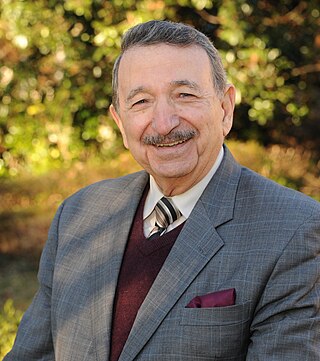
Mostafa A. El-Sayed is an Egyptian-American physical chemist, a leading nanoscience researcher, a member of the National Academy of Sciences and a US National Medal of Science laureate. He was the editor-in-chief of the Journal of Physical Chemistry during a critical period of growth. He is also known for the spectroscopy rule named after him, the El-Sayed rule.
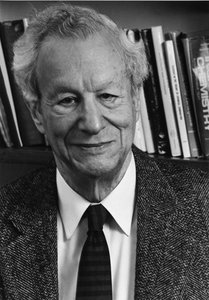
Frank Henry Westheimer was an American chemist. He taught at the University of Chicago from 1936 to 1954, and at Harvard University from 1953 to 1983, becoming the Morris Loeb Professor of Chemistry in 1960, and Professor Emeritus in 1983. The Westheimer medal was established in his honor in 2002.

Richard Neil Zare is the Marguerite Blake Wilbur Professor in Natural Science and a Professor of Chemistry at Stanford University. Throughout his career, Zare has made a considerable impact in physical chemistry and analytical chemistry, particularly through the development of laser-induced fluorescence (LIF) and the study of chemical reactions at the molecular and nanoscale level. LIF is an extremely sensitive technique with applications ranging from analytical chemistry and molecular biology to astrophysics. One of its applications was the sequencing of the human genome.
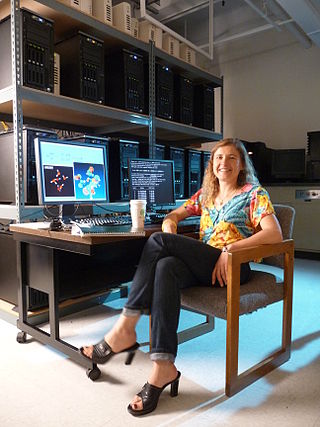
Anna I. Krylov is the USC Associates Chair in Natural Sciences and Professor of Chemistry at the University of Southern California (USC), working in the field of theoretical and computational quantum chemistry. She is the inventor of the spin-flip method. Krylov is the president of Q-Chem, Inc. and an elected member of the International Academy of Quantum Molecular Science, the Academia Europaea, and the American Academy of Sciences and Letters.

Galen D. Stucky is an American inorganic materials chemist who is a Distinguished Professor and the Essam Khashoggi Chair In Materials Chemistry at the University of California, Santa Barbara. He is noted for his work with porous ordered mesoporous materials such as SBA-15. He won the Prince of Asturias Award in 2014, in the Scientific and Technological Research area. Stucky was elected a member of the American Association for the Advancement of Science in 1994, a member of the American Academy of Arts and Sciences in 2005, and a member of the National Academy of Sciences in 2013.
Robert George Bergman is an American chemist. He is Professor of the Graduate School and Gerald E. K. Branch Distinguished Professor Emeritus at the University of California, Berkeley.

Gerhard Ertl is a German physicist and a Professor emeritus at the Department of Physical Chemistry, Fritz-Haber-Institut der Max-Planck-Gesellschaft in Berlin, Germany. Ertl's research laid the foundation of modern surface chemistry, which has helped explain how fuel cells produce energy without pollution, how catalytic converters clean up car exhausts and even why iron rusts, the Royal Swedish Academy of Sciences said.

Raphael David Levine is an Israeli chemist who is a professor at the Hebrew University of Jerusalem, and the Department of Chemistry and Biochemistry, University of California, Los Angeles and the Crump Institute for Molecular Imaging of the David Geffen School of Medicine at UCLA.
Curt Franklin Wittig is a professor of chemistry and the holder of the Paul A. Miller Chair in the college of letters, arts, and sciences at the University of Southern California (USC).
John C. Tully is a theoretical chemist, a researcher and Sterling Professor emeritus of Chemistry at Yale University. He is known for his development of surface hopping, a method for including excited states in molecular dynamics calculations. Much of his career was spent at Bell Labs, from 1970-1996, exploring theoretical chemistry and surface science. In 1996, he became a faculty member at Yale University, where he pursued research in physical chemistry and physics. He is a member of the National Academy of Sciences and the International Academy of Quantum Molecular Science. In 2020 he was awarded the NAS Award in Chemical Sciences.
Sharon Hammes-Schiffer is a physical chemist who has contributed to theoretical and computational chemistry. She is currently a Sterling Professor of Chemistry at Yale University. She has served as senior editor and deputy editor of the Journal of Physical Chemistry and advisory editor for Theoretical Chemistry Accounts. As of 1 January 2015 she is editor-in-chief of Chemical Reviews.

Judith P. Klinman is an American chemist, biochemist, and molecular biologist known for her work on enzyme catalysis. She became the first female professor in the physical sciences at the University of California, Berkeley in 1978, where she is now Professor of the Graduate School and Chancellor's Professor. In 2012, she was awarded the National Medal of Science by President Barack Obama. She is a member of the National Academy of Sciences, American Academy of Arts and Sciences, American Association for the Advancement of Science, and the American Philosophical Society.

Martin Quack is a German physical chemist and spectroscopist; he is a professor at ETH Zürich.

Rigoberto Hernandez is an American chemist and academic. He is The Gompf Family Professor at the Johns Hopkins University and was formerly a board member of the American Chemical Society (ACS). Before his appointment at Johns Hopkins, Hernandez spent 20 years as a faculty member at the Georgia Institute of Technology, where he became a full professor. In addition to his work as a professor, Hernandez is also the director of the Open Chemistry Collaborative in Diversity Equity, a program dedicated to creating more diversity in academia.
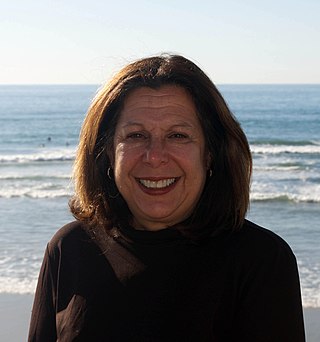
Vicki H. Grassian is a distinguished professor in the department of chemistry and biochemistry at the University of California, San Diego. She also holds the distinguished chair in physical chemistry.
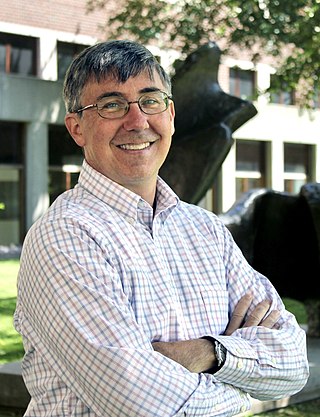
William H. Green Jr., is a Hoyt C. Hottel Professor of Chemical Engineering at the Massachusetts Institute of Technology, working in the field of chemical reaction engineering.
Hilkka Inkeri Kenttämaa is a researcher in organic and bioorganic mass spectrometry, and the Frank Brown Endowed Distinguished Professor of Chemistry at Purdue University. She is a pioneer in distonic radical cation research and laser-induced acoustic desorption.
References
- ↑ "Ramon Alvarez". Environmental Defense Fund. Retrieved November 3, 2020.
- ↑ "Prize Recipient". Aps.org. Retrieved November 3, 2020.
- ↑ "Dr. Roy Chuck Named Chair of Ophthalmology and Visual Sciences at Albert Einstein College of Medicine and Montefiore Medical Center". Newswise.com. Retrieved November 3, 2020.
- ↑ [ dead link ]
- ↑ "Home | Green Research Group". Greengroup.mit.edu. Retrieved November 3, 2020.
- ↑ "Institute of Atomic and molecular Sciences, Academia Sinica – Faculty Information". Iams.sinica.edu.tw. Retrieved November 3, 2020.
- ↑ "Peter Remsen Ogilby – Research – Aarhus University". Pure.au.dk. Retrieved November 3, 2020.
- ↑ "William F. Polik Home Page". Chem.hope.edu. Retrieved November 3, 2020.
- ↑ "Professor Sean Smith profile – RSPhys – ANU". Physics.anu.edu.au. Retrieved November 3, 2020.
- ↑ "Roger D. van Zee : Chemical Sciences Division, National Institute of Standards and Technology" (PDF). Ccrhq.org. Retrieved November 3, 2020.
- ↑ "weisshaa | Department of Chemistry". 2.chem.wisc.edu. Retrieved November 3, 2020.
- ↑ "Linda Young | Department of Physics | The University of Chicago". Physics.uchicago.edu. Retrieved November 3, 2020.
- 1 2 3 4 5 "Biography of Professor C. Bradley Moore". Journal of Physical Chemistry A. 104 (45): 45. 2000. doi:10.1021/jp002080z.
- ↑ "C. Bradley Moore". Optical Society of America. Retrieved November 3, 2020.
- ↑ Moore, Charles Bradley (1974). Chemical and Biochemical Applications of Lasers. ISBN 978-0125054058.
- ↑ C.B. Moore (1973). "Applications of lasers to isotope separation". Acc. Chem. Res. 6, 9 (9): 323–328. doi:10.1021/ar50069a007.
- ↑ AG Suits, Acc Chem Res. 2008 Jul;41(7):873-81. doi: 10.1021/ar8000734.
- ↑ C.B. Moore (2007). "A Spectroscopist's View of Energy States, Energy Transfers, and Chemical Reactions". Annu. Rev. Phys. Chem. 58: 1–33. Bibcode:2007ARPC...58....1M. doi: 10.1146/annurev.physchem.58.032806.104610 . PMID 17034339.
- ↑ W.H. Green, C.B. Moore, W.F. Polik, Ann. Rev. Phys. Chem 1992
- ↑ "ACS Meetings & Events". American Chemical Society. Retrieved November 3, 2020.
- ↑ "C. Bradley Moore". National Academy of Sciences. Retrieved November 3, 2020.
- ↑ "Professor C. Bradley Moore". American Academy of Arts and Sciences. Retrieved November 3, 2020.